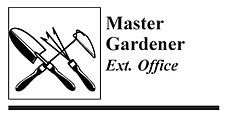May 10, 2007 at 8:15 a.m.
Deer account for at least half of the concerns of four-legged critters. Hungry deer will eat about anything. Some of their favorites are arborvitae, yew, birch, apple, dogwood, daylily and hostas. Since I first wrote an article back in 2002 on critters, I have added raspberries, strawberries, blueberries, sweet corn and small conifer seedlings to this list.
They tend not to eat lilac, juniper, spruce, spirea, barberry, potentilla, peony and daffodil. Thorny plants and plants with fuzzy or leathery leaves are also less likely to be eaten.
Fencing is the most effective means of reducing deer damage. Many apple and strawberry growers use cyclone or high fences to protect their crop. This is, of course, cost prohibitive and unrealistic for the majority of us. Some are using an electric fence to help control the deer and this includes me. It used to be that I could put up a low wire to control the raccoon in my sweet corn. In recent years I have been forced to put up an additional wire three to four feet high. The deer would go into the sweet corn field and eat the silk off the cobs, thus aborting the ears.
Odor and taste repents, such as human hair, deodorant soap, garlic oil and hot sauce are applied to branches and foliage to discourage browsing. Repellents are not effective against antler rubbing.
Big game repellent also known as Deer Away, made from putrescent (rotten) whole egg solids is somewhat effective. Hinder, made from ammonium soaps of highly fatty acid is also effective. Thiran, a bitter tasting fungicide is now also used in repellents. Several gardeners feel that Liquid fence and a new product called Plantskydd are the most effective deer repellents at the present time.
Another critter that does extensive damage to gardens is rabbits. The Eastern Cottontail is the most familiar in our area. Although rabbit damage occurs throughout the year, it appears to be most severe during the winter months when the natural food supply isn't available.In spring, rabbit snip off young tender shoots of emerging tulip foliage and flower buds. In summer, rabbits visit vegetable gardens, nibbling on young vegetable plants. During winter, they chew off buds and stems of shrubs and other low growing plants. Favorites include gooseberry, alpine currents, raspberries, roses and azaleas. Rabbits also chew on the bark of young trees especially fruit trees.
Control of rabbits includes eliminating hiding places such as woodpiles, brush, brambles, tall grass and weeds. One can protect shrubs and gardens with fencing. A chicken wire fence, with a one-inch or finer mesh at least two feet high, provides adequate protection. Extend the bottom of the fence at least six inches below the soil line.
Odor repellents, including mothballs and blood meal are less effective in open environments. Taste repellents are available at local garden supply stores. By law, all commercial repellents must be used according to instructions on the product labels. Although all rabbits are a protected species in Minnesota, the law provides for the trapping and removal from private property of any rabbit that is causing damage. Rabbits are easily caught in live or cage traps baited with apples, shelled corn or carrots.
Raccoons have been a problem in the gardens for many years. They are especially found of watermelons and sweet corn. They make a small hole in the watermelon with the front paw and they scoop out the fruit. Sweet corn is possibly their favorite meal. They pull the husk back and eat part of the ear. They can also knock down the stalk by climbing it as they go after the ears.
Discourage raccoons from raiding garbage cans by using tight fitting tough containers with locking lids. Various types of fences will also discourage them. This includes electric fencing and poultry fences with roofs since they are great climbers.
I wish I could say that various repellents work, but in my experience they don't. If you have a solution that works for you, continue with whatever you are doing.
+++++
A reminder that we still have some bare root plants available and many classes left in our Spring fever series. Call Extension Office at 651-674-4417 for information. For even faster results contact me at 651-257-4496



Comments:
Commenting has been disabled for this item.